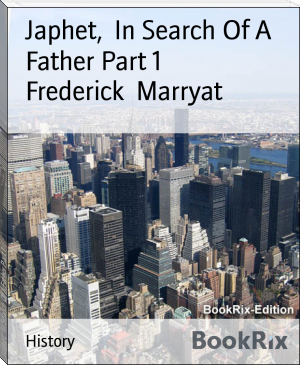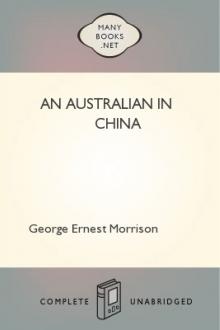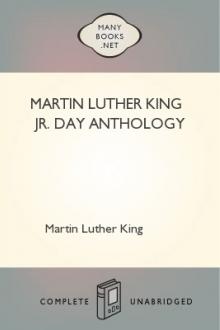The Origin of the Family Private Property and the State by Frederick Engels (classic novels .txt) 📕

- Author: Frederick Engels
- Performer: -
Book online «The Origin of the Family Private Property and the State by Frederick Engels (classic novels .txt) 📕». Author Frederick Engels
[7] Author's note.
How little Bachofen understood what he had discovered, or rather guessed, is proved by the term "hetaerism," which he applies to this primeval stage. Hetaerism designated among the Greeks an intercourse of men, single or living in monogamy, with unmarried women. It always presupposes the existence of a well defined form of marriage, outside of which this intercourse takes place, and includes the possibility of prostitution. In another sense this word was never used, and I use it in this sense with Morgan. Bachofen's very important discoveries are everywhere mystified in the extreme by his idea that the historical relations of man and wife have their source in the religious conceptions of a certain period, not in the economic conditions of life.
[8] Translator's note.
The female of the European cuckoo (cuculus canorus) keeps intercourse with several males in different districts during the same season. Still, this is far from the human polyandry, in which the men and one women all live together in the same place, the men mutually tolerating one another, which male cuckoos do not.
[9] Westermarck, The History of Human Marriage, London, 1891.
[10] Espinas, Des Societes Animales, 1877.
[11] Espinas, l. c., quoted by Giraud-Teulon, Origines du mariage et de la famille, 1884, p. 518-20.
[12] Author's note. In the spring of 1882, Marx expressed himself in the strongest terms on the total misrepresentation of primeval times by Wagner's Nibelungen text: "Who ever heard of a brother embracing his sister as a bride?" To these lascivious Wagnerian gods who in truly modern style are rendering their love quarrels more spicy by a little incest, Marx replies: "In primeval times the sister was the wife and that was moral." (To the fourth edition.) A French friend and admirer of Wagner does not consent to this foot note, and remarks that even in the Oegisdrecka, the more ancient Edda on which Wagner built, Loki denounces Freya: "Before the gods you embraced your own brother." This, he says, proves that marriage between brother and sister was interdicted even then. But the Oegisdrecka is the expression of a time when the belief in the old myths was totally shaken; it is a truly Lucian satire on the gods. If Loki as Mephisto denounces Freya in this manner, then it is rather a point against Wagner. Loki also says, a few verses further on, to Niordhr: "With your sister you generated (such) a son" ("vidh systur thinni gatzu slikan mog"). Niordhr is not an Asa, but a Vana, and says in the Ynglinga Saga that marriages between brothers and sisters are sanctioned in Vanaland, which is not the case among the Asas. This would indicate that the Vanas are older gods than the Asas. At any rate Niordhr lived on equal terms with the Asas, and the Oegisdrecka is thus rather a proof that at the time of the origin of the Norwegian mythology the marriage of brother and sister was not yet repulsive, at least not to the gods. In trying to excuse Wagner it might be better to quote Goethe instead of the Edda. This poet commits a similar error in his ballad of the god and the bajadere in regard to the religious surrender of women and approaches modern prostitution far too closely.
[13] There is no longer any doubt that the traces of unrestricted sexual intercourse, which Bachofen alleges to have found—called "incestuous generation" by him—are traceable to group marriage. If Bachofen considers those Punaluan marriages "lawless," a man of that period would look upon most of our present marriages between near and remote cousins on the father's or mother's side as incestuous, being marriages between consanguineous relatives.—Marx.
[14] The People of India.
[15] See translator's note, p. 55.
[16] Translator's note.
According to Cunow, Kroki and Kumite are phratries. See "Die Verwandschaftsorganizationen der Australneger," by Heinrich Cunow. Stuttgart, Dietz Verlag, 1894.
[17] Translator's note.
Heinrich Cunow has given us the results of his most recent investigations in his "Verwandschaftsorganisationen der Australneger." He sums up his studies in these words: "While Morgan and Fison regard the system of marriage classes as an original organization preceding the so-called Punaluan family, I have found that the class is indeed older than the gens, having its origin in the different strata of generations characteristic of the "consanguine family" of Morgan; but the present mode of classification in force among Kamilaroi, Kabi, Yuipera, etc., cannot have arisen until a much later time, when the gentile institution had already grown out of the horde. This system of classification does not represent the first timid steps of evolution; it is not the most primitive of any known forms of social organization, but an intermediate form that takes shape together with the gentile society, a stage of transition to a pure gentile organization. In this stage, the generic classification in strata of different ages belonging to the so-called consanguine family runs parallel for a while with the gentile order....
It would have been easy for me to quote the testimony of travelers and ethnologists in support of the conclusions drawn by me from the forms of relationship among Australian negroes. But I purposely refrain from doing this, with a few exceptions, first because I do not wish to write a general history of the primitive family, and, secondly, because I consider all references of this kind as very doubtful testimony, unless they are accompanied by an analysis of the entire organization. We frequently find analogies to the institutions of a lower stage in a high stage, and yet they are founded on radically different premises and causes. The evolution of the Australian aborigines shows that. Among the Australians of the lower stage, e. g., the hordes are endogamous, among those of the middle stage they are exogamous, and in the higher stage they are again endogamous. But while in the one instance the marriage in the horde is conditioned on the fact that the more remote relatives are not yet excluded from sexual intercourse, it is founded in the other case on the difference between local and sexual organization. Furthermore, the marriage between daughter and father is permitted in the lower stage, and again in that higher stage, where the class organization of the Kamilaroi is on the verge of dissolution. But in both cases the circle of those who are regarded as fathers is entirely different. The character of an institution can only be perfectly understood, if we examine its connection with the entire organization, and, if possible, trace its metamorphoses in the preceding stages....
The characteristic feature of the class system is that by the side of the gentile order, such as is found among the North American Indians, there is always another system of four marriage classes for the purpose of limiting sexual intercourse between certain groups of relatives. Neither the phratry nor the gens of the Kamilaroi forms a distinct territorial community. Their members are scattered among different roving hordes, and they only meet occasionally, e. g., to celebrate a feast or dance....
The origin of gentile systems out of Punaluan groups has never been proven, while we see among the Australian negroes that the classes are clearly and irrefutably in existence among the first traces of gentilism....
The class system in its original form is a conclusive proof of Morgan's theory, that the first step in the formation of systems of relationship consisted in prohibiting sexual intercourse between parents and children (in a wider sense)....
It has been often disputed that the Punaluan family ever existed outside of the Sandwich Islands. But the marriage institutions of certain Australian tribes named by me prove the contrary. The Pirrauru of the Dieyerie is absolutely identical with the Punalua of the Hawaiians; and these institutions were not described by travelers who rushed through the territories of those tribes without knowing their language, but by men who lived among them for decades and fully mastered their dialects....
I have shown how far the class system corresponds to the Hawaiian system. It is and remains a fact, that it contains a long series of terms that cannot be explained by the relations in the so-called consanguine family, and the use of which creates confusion, if applied to this family. But that simply shows that Morgan was mistaken about the age and present structure of the Hawaiian system. It does not prove that it could not have grown on the basis assumed by him....
If the opponents of Morgan dispute that the so-called consanguine family is based on blood kinship, they are right, unless we wish to assign an exceptional position to the Australian strata of generations. But if they go further and declare that the subsequent restrictions of inbreeding and the gentile order have arisen independently of relationships, they commit a far greater mistake than Morgan. They block their way to an understanding of subsequent organizations and force themselves to all sorts of queer assumptions that at once appear as the fruits of imagination, when compared with the actual institutions of primitive peoples.
This explanation of the phases of development of family institutions contradicts present day views on the matter. Since the scientific investigations of the last decade have demonstrated beyond doubt that the so-called patriarchal family was preceded by the matriarchal family, it has become the custom to regard descent by females as a natural institution belonging to the very first stages of development which is explained by the modes of existence and thought among savages. Paternity being a matter of speculation, maternity of actual observation, it is supposed to follow that descent by females was always recognized. But the development of the Australian systems of relationship shows that this is not true, at least not in regard to Australians. The fact cannot be disputed away, that we find female lineage among all those higher developed tribes that have progressed to the formation of gentile organizations, but male lineage among all those that have no gentile organizations or where these are only in process of formation. Not a single tribe has been discovered so far, where female lineage was not combined with gentile organization, and I doubt that any will ever be found."
[18] The History of Human Marriage, p. 28-29.
[19] Mutterrecht, p. xix.
[20] A Journey in Brazil. Boston and New York, 1886. Page 266.
[21] Bancroft, Native Races, I., 81.
[22] Ibidem, p. 584.
[23] Morgan, Ancient Society, p. 504.
CHAPTER III. THE IROQUOIS GENS.We now come to another discovery of Morgan that is at least as important as the reconstruction of the primeval form of the family from the systems of kinship. It is the proof that the sex organizations within the tribe of North American Indians, designated by animal names, are





Comments (0)